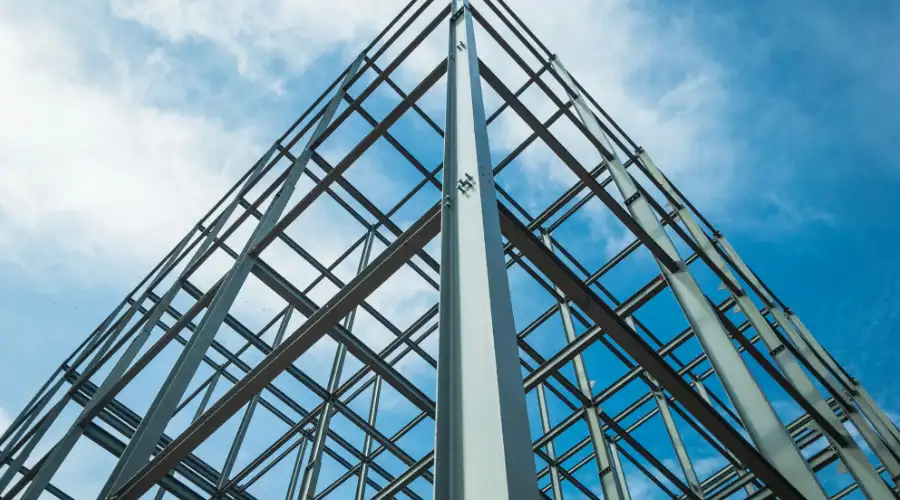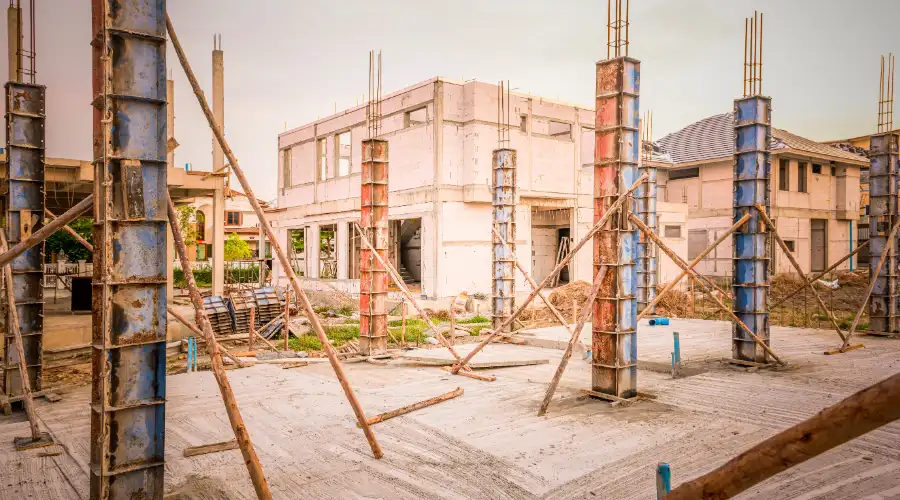Structural elements such as beams and columns are important components that help in the integrity and stability of buildings. They are the building blocks of modern architecture that help engineers design structures that can be visually pleasing, as well as capable of withstanding different loads and stresses.
Beams and columns are significantly different, but they complement each other in the function related to the structural framework of the buildings. This blog helps in understanding the differences between beams and columns that are used in the construction industry.
Beam vs Column
Beam:

The horizontal structural component that resists the vertical load is known as a beam and its mode of deflection is bending. It helps in the transfer of loads to the walls, columns, and foundations. Beams are mainly designed to handle different types of loads like
- Dead Loads
- Live Loads
- Environmental Loads
Some types of beams based on support conditions are,
- Simply Supported Beams
- Cantilever Beams
- Fixed Beams
- Continuous Beams
Some types of beams based on cross sectional shapes are:
- Rectangular Beams
- I-Beams
- T-Beams
- L-Beams
- H- Beams
Some common materials used for beams are concrete, steel and wood. They are mainly present below the roof and floor structures of every building and help in transmitting loads from there to the columns or load bearing walls.
Column:

A column is a vertical structural element that bears the loads, especially compression. It majorly bears loads from the beams or roofing above it and transmits these to the floor or foundation below it. It is essential for supporting slabs, beams, and other horizontal elements.
The main role of columns and in transferring loads to foundations is bearing vertical loads and resisting buckling and crushing.
Column types based on shape are:
- Circular columns
- Square columns
- Rectangular columns
Column types based on slenderness ratio are:
- Short columns
- Long columns
Column types based on material used are:
- Concrete column
- Steel column
- Wood column
- Composite column
Columns are essential in different types of construction that include high-rising buildings, bridges, and large infrastructures like stadiums, airports, and so on.
Differences Between Beams and Columns
| S.No | DESCRIPTION | BEAM | COLUMN |
| 1 | Support | They are supported by columns or load bearing walls at one end or both ends. | They are supported on the foundation or on floor slabs. |
| 2 | Weight transfer | It carries the weight of slabs, ceilings, floor, and roofs of a building and transfers it to columns. | It carries the load transferred by the beam or roof and ultimately transfers it to the footing and ground. |
| 3 | Classification | Beams are classified based on their shape and support end condition. | Columns are classified based on their cross-section shape, slenderness ratio and types of loading. |
| 4 | Shape | A beam may be square, rectangular, T-shape, I-shape, and H-shape. | A column may be rectangular, circular, square, T-shape, L-shape, and C-shape. |
| 5 | Definition | A beam is a structural member carrying transverse loads. | A column is a structural member carrying axial loads. |
| 6 | Load Transferring | A beam transfers the load perpendicular to the longitudinal axis. | A column transfers the load parallel to the longitudinal axis |
| 7 | Way of Load Resistance | Beams resist the transverse load of the structure. | Columns resist the compression load of the structure. |
| 8 | Steel Consumption in RCC | Minimum and maximum steel usage of an RCC beam is 0.25% to 2.5%. | Minimum and maximum steel usage of an RCC column is 0.8% to 5%. |
| 9 | Failure | Beam failure shows symptoms like cracks or deflection before collapse. | Column failure happens suddenly without any warning and can cause fatal damages. |
| 10 | Position | Beams are horizontal structural components. | Columns are vertical structural components. |
| 11 | Response to Loads | Shear force and bending moment occur in beams, causing strain and deflection. | Columns experience compressive stress, with lateral deflection occurring due to lateral loads. |
| 12 | Confinement Bars | Beams require stirrups to resist shear force and torsion. | Columns use ties to hold longitudinal bars in place and prevent buckling. |
| 13 | Design Criteria | Beams require checks for longitudinal, shear, and torsional reinforcement during design. | Columns require checks for PMM interaction ratio, rebar percentage, and other criteria during design. |
Example: Consider a steel rod with a length of 5 meters that needs to support a load, labeled “P.”
- First Situation: We place the rod horizontally across two supports and then apply the load on top of it. In this configuration, the load is primarily transferred through bending, so the rod functions as a Beam.
- Second Situation: If we keep the rod vertical and apply the load horizontally, the primary method of load transfer remains bending, so we still refer to it as a Beam.
- Third Situation: Now, let’s position the rod vertically on the ground and place the load on top. Here, the load is transmitted through compression, making the rod act as a Column.
- Fourth Situation: Finally, we suspend the rod from the ceiling and attach the load to the other end. In this scenario, the load is primarily transferred through tension, so the rod is called a Tie.
Conclusion
In the construction industry, the roles of beams and columns are different but they are complementary to each other. They both have certain functions that help in the maintenance of stability and integrity in construction. Understanding the difference between these two structural elements is important for people involved in the design, construction, or inspection of the building. By carefully understanding the characteristics and functions of beams and columns, common mistakes can be avoided. Additionally, structural designs can be optimized and buildings can meet the safety standards and design goals properly.
FAQs
Beam failure typically shows cracks or deflection before collapse.
No, a beam functions as a horizontal member, while a column functions as a vertical member.
Types include circular, square, rectangular, short, and long columns.
Beams use stirrups to resist shear force and torsion.
Columns use ties to hold longitudinal bars in place and prevent buckling.

